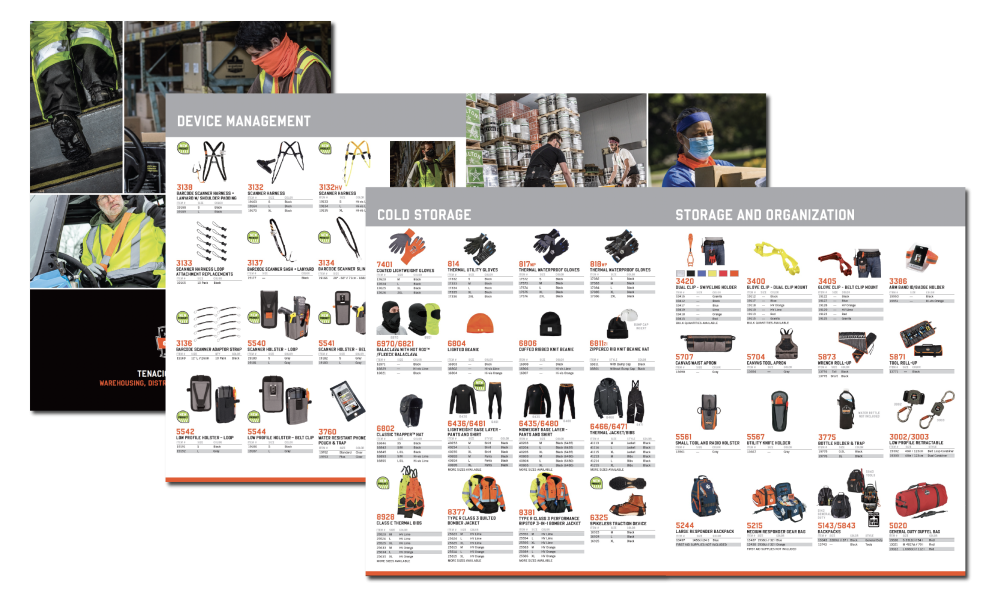7 Supply Chain PPE Recommendations for a Safer More Productive Workplace
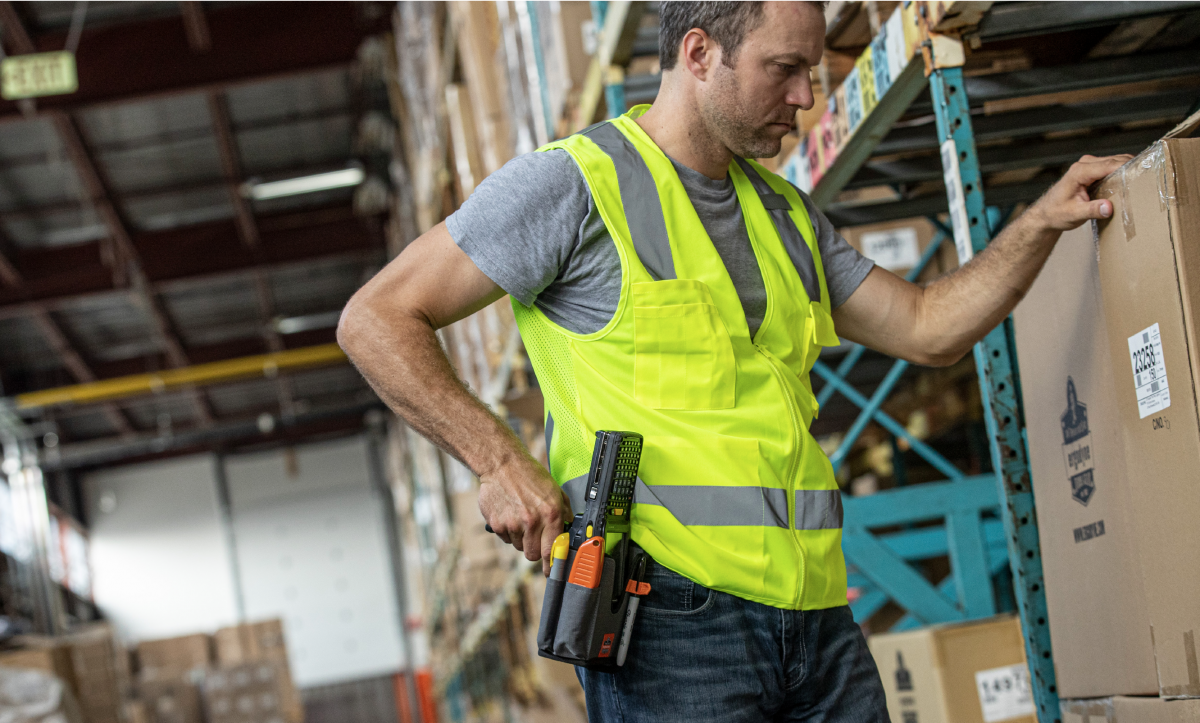
Is your crew's PPE as productive as it as protective? From temp management to device access, here are seven innovative gear recommendations to keep work flowing smoothly through every link in the supply chain—warehouse to doorstep.
Global supply chain chaos has those in warehousing, distribution and retail operations under intense pressure to deliver—and sometimes looking for shortcuts to do so. Unfortunately, these shortcuts often come at the expense of worker safety.
The irony, of course, is that a safe worker is unequivocally a more productive one. Time lost to injury is productivity lost to injury—mind blowing, right? So how come safety is often seen as a roadblock to quality work instead of an inextricable component of it?
Much of it comes from how we think about and teach workplace safety. We think safety consultant and author Abby Ferri put it best on a recent episode of the Radio Free Tenacity podcast: “I think the reason that safety is looked at as something difficult is because they’re looking at it as something else that they have to do, when really, it’s just part of the job.”
“If you’re trying to get the job done right and be productive, safety is going to have to play some kind of role in that.”
PERSONAL PRODUCTIVITY EQUIPMENT
When it comes to PPE, a similar mindset is often at play. Something that has to be worn. Something to get in the way. “I can be more productive without it”. You know, the usual tough guy act.
The reality is, properly selected, mindfully designed PPE is every bit about productivity as it is protection—not only because it helps avoid lost time to injury, but because it actually enhances one’s ability to do the job.
To that end, consider the following PPE recommendations for safer, more productive workers at every link in the supply chain—warehouse to doorstep.
TEMPERATURE STRESS
Hot or cold. Indoors or out. Fulfillment center or delivery. Controlling core body temps is crucial to productivity. Consider a Lawrence Berkeley National Lab study that found worker performance begins to drop off when temperatures rise above the mid-70s. Or a 2018 Harvard study that linked extreme heat to lowered cognitive function.
Cold environments come with their own challenges and hazards… from brittle clumsy hands to severe illnesses such as frostbite and hyperthermia.
PPE Recommendation for the Heat: Phase Change Cooling
Because it doesn’t require airflow, phase change is an optimal solution for reducing the risk of indoor heat stress or mitigating heat in humid outdoor climates (where evaporative cooling options don’t perform as well). Commonly used in vests, this technology pulls heat from the body via cooling charge packs filled with non-toxic phase change liquids.
Depending on what you have available (cooler, fridge or freezer), activation takes between 10-25 minutes and lasts up to four hours. Unlike ice or gel packs, phase change packs are not stiff or frosty—making them a more comfortable solution for long term wear.
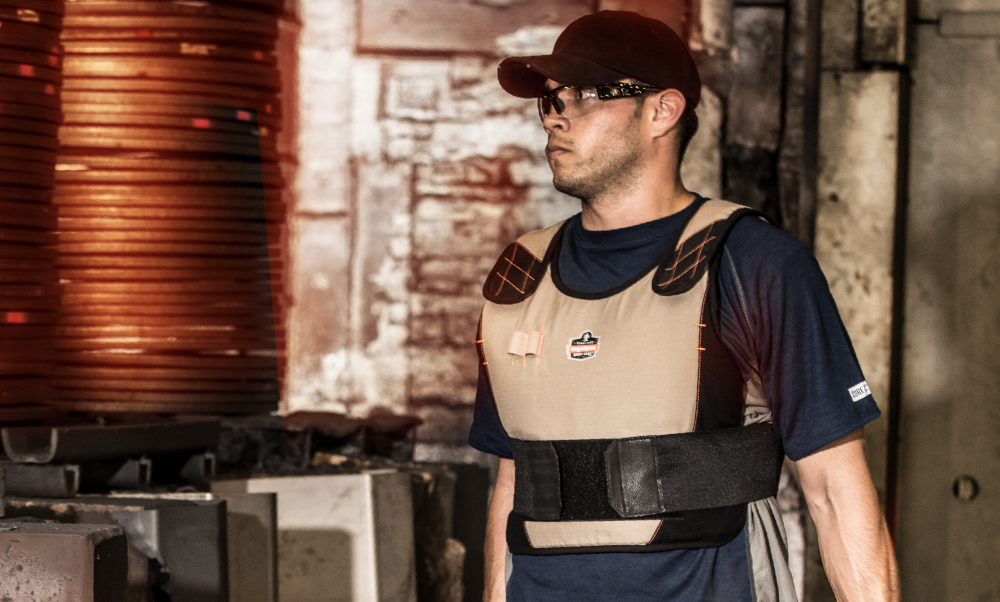
PPE Recommendation for the Cold: Base Layers
Moisture is your enemy. Sweat or water on the surface of the skin draws heat away from the body, cooling it rapidly. When the goal is to stay warm, productive and agile, a moisture-wicking, quick-drying layer is key. Venting underarms and a slightly loose, non-compression fit garment also create a breathable layer of air insulation.
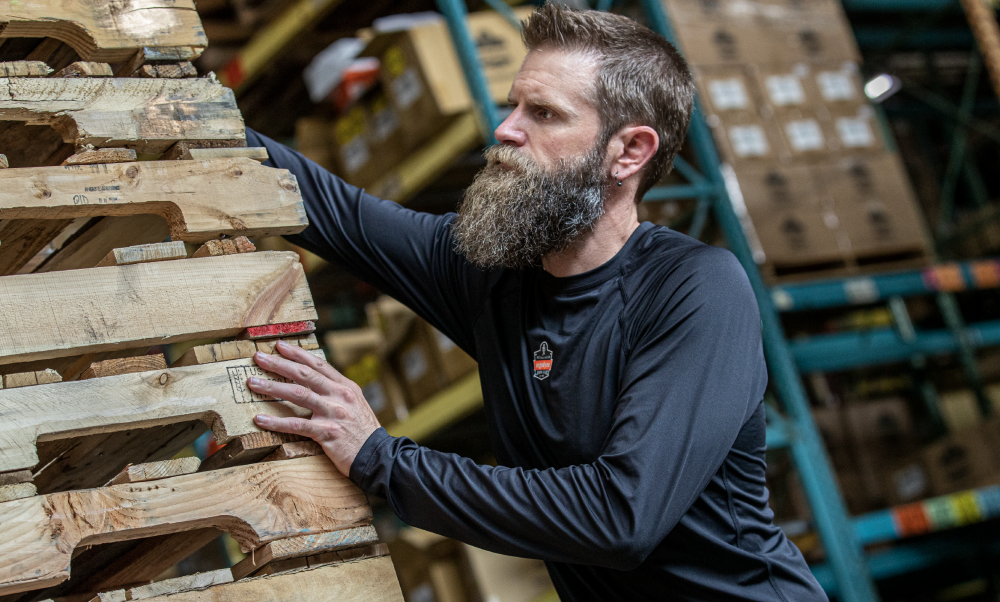
SPRAINS & STRAINS
Repetition, repetition, repetition. Match it with poor form and you’re in for a world of hurt (along with many others—sprains and strains continue to be the number one workplace injury in the U.S. year after year).
PPE Recommendation: Knee and Elbow Sleeves
Everybody knows (or at least should know) about the role back supports play in reminding workers of proper lifting form to reduce back injuries. Maybe less known are the benefits of compression sleeves for supporting hard working joints. Popular with athletes, knee, elbow and wrist sleeves compress the joint to improve blood flow and reduce swelling, while also lending support for improved joint stability.
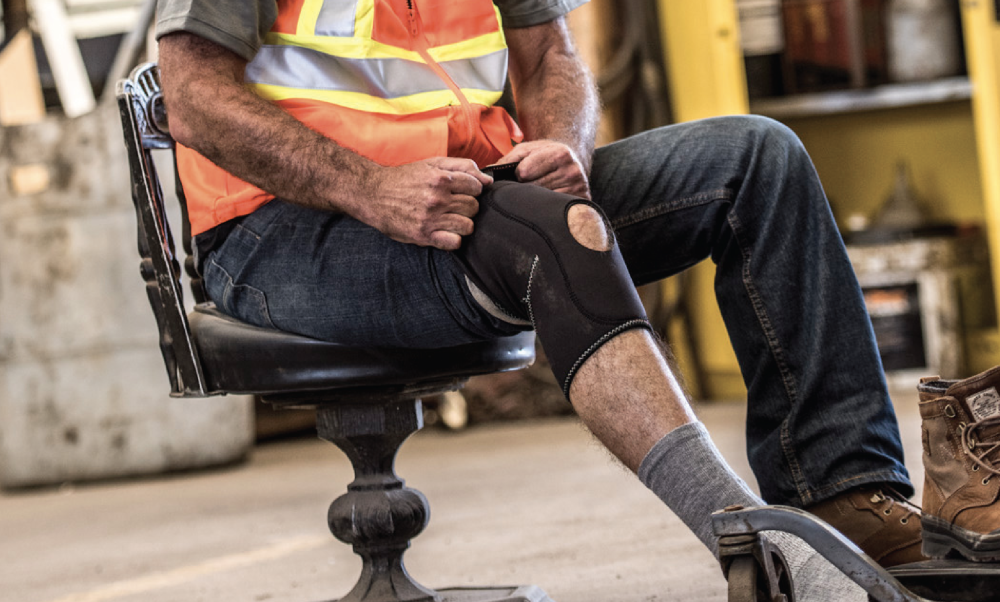
HAND INJURIES
70% of all hand injuries occur because gloves weren’t worn (Source: Bureau of Labor Statistics). The other 30%? Because the wrong glove was worn. Aside from cuts, punctures and other gruesome things you wouldn’t ever want to Google image search, the right pair of gloves can help you get a stronger grip on the task at hand with less effort and—in turn—less hand fatigue.
PPE Recommendation: Task-Matched Work Gloves
Finding the right pair of work gloves is a balancing act of considerations. Some of the biggies are:
- Personal preference: Fit, comfort and compatibility with the task at hand is priority numero uno.
- Hazard analysis: Cold environments, hot surfaces, sharp edges… take stock of all the dangers encountered during a day’s work and balance it with personal preference/ability to do the job.
- Devices/tech: Touchscreen-friendly fingers remove another reason to take gloves off.
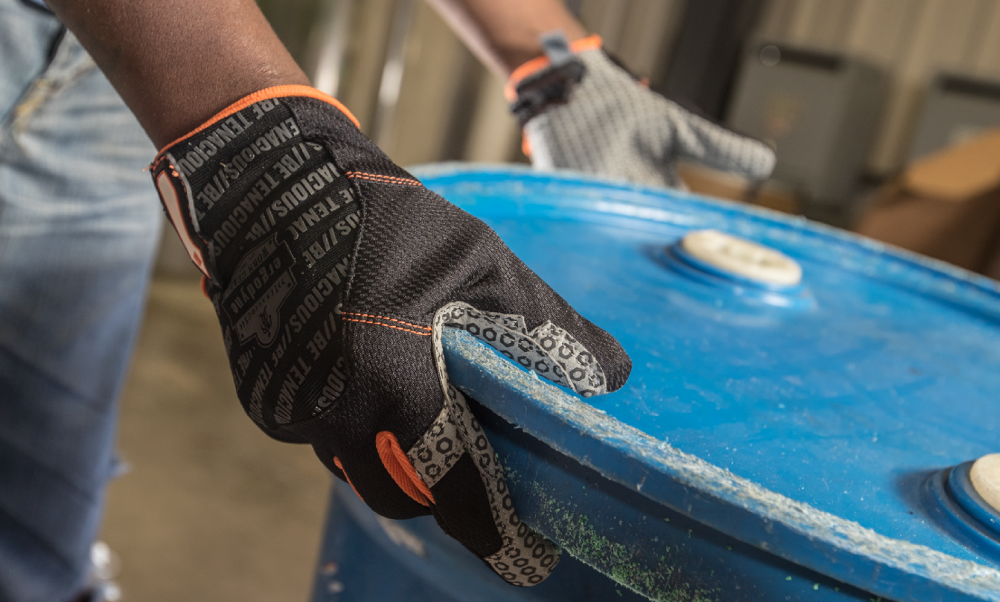
SLIPS & FALLS
Of 3.8 million disabling workplace injuries each year, 15% are caused by slips, trips and falls (Source: National Safety Council). From loading docks to delivery, workers frequently transitioning from outdoors to indoors are highly susceptible to slip ups—especially during wet, sloppy winter months.
PPE Recommendation: Indoor/Outdoor Traction Devices
Though traditional cleats offer great traction on ice, they’re a pain for workers to take off and put back on as they go from outdoors to indoors and back again. Even more, they can cause damage to vehicles and equipment and actually can become a slip hazard themselves when stepping onto concrete or other hard surfaces. Spikeless devices can be easily put on over boots and shoes for easy and safe transition between environments, all while maintaining sure-footed grip on water, ice or snow.
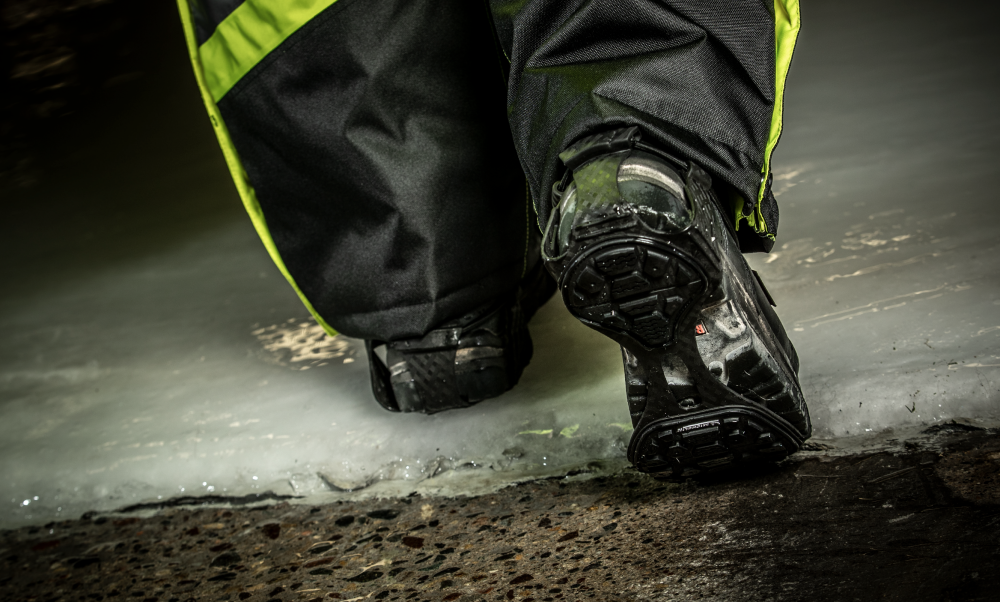
STRUCK-BY INCIDENTS
The obvious safety benefit to wearing high-visibility clothing is right in the name. But there’s a pure productivity play here, too. Using specific colors for specific jobs is a quick and easy way for managers to decipher who’s who and what’s what on a bustling warehouse floor. Many vests also have convenient considerations built right in to help workers maximize every moment.
PPE Recommendation: Surveyor Style Hi-Vis Vests
Surveyor vests work harder so crews can work smarter. Additional pockets, pen holders and mic tabs give regular ol’ vests a shot of productivity by turning this tried-and-true safety staple into a mobile work station.
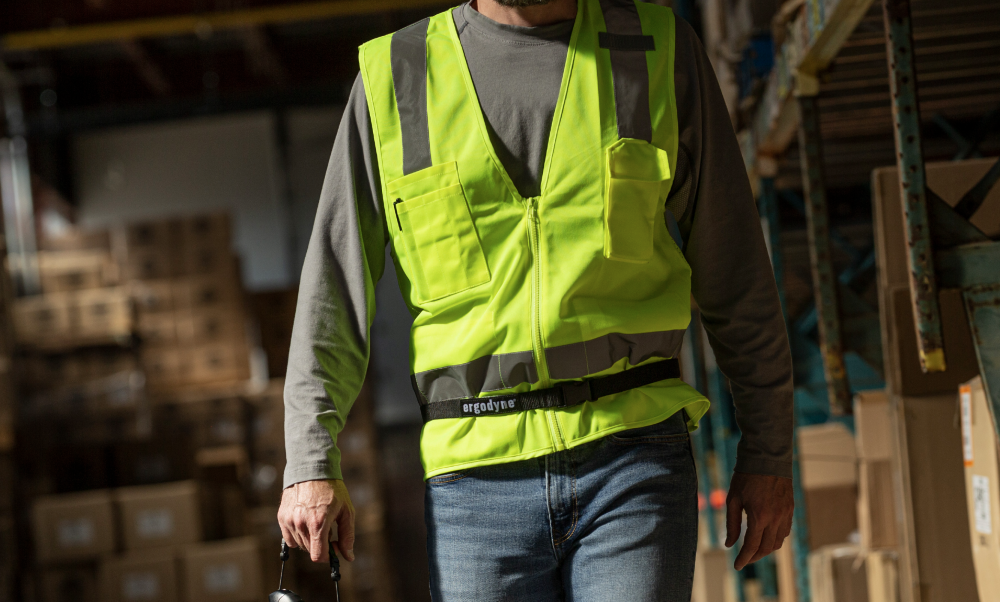
DEVICE MANAGEMENT
Barcode scanners and mobile computers have become omnipresent across the entire supply chain, from fulfillment centers to curbside delivery. Ranging anywhere from $800 to $2,000 a pop, handheld scanner devices don’t come cheap—a cost that’s compounded every time they’re dropped or left behind.
PPE Recommendation: Scanner Harnesses, Holsters and Holders
The idea is simple. Keep costly devices safe, secure and at-the-ready. Scanner harnesses are favored by order pickers and other folks on the fly, where the device sits comfortably at their side for a quick draw while remaining tethered to the harness (but still allowing for full range of motion). For more customer-facing folks like delivery workers or in-store stockers, holsters might be preferred as they’re a bit less conspicuous and can be clipped onto belts or equipment (like a shopping cart).

FULLY STOCKED FOR SAFETY
With a loaded line of solutions built for convenience, comfort and cost-savings, it’s never been easier to make safety the strongest link in the chain.
